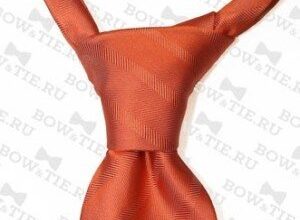In recent years, sailing has grown in popularity. And here yachting clothing played an important role. Modern innovative technologies are constantly being improved, and with them the fabrics from which the outfits of yachtsmen are sewn. Today, special equipment for yachting (aka sailing, sailing, sailing) is distinguished by increased moisture resistance, air permeability, wind protection, the ability to retain body heat for a long time, and durability. All this allows you to choose the optimal set of clothes for any, even the most extreme weather. But today we will talk about what you need to know before buying such outfits, how to create your universal wardrobe for a regatta or traveling on a ship. Give up the mooring lines!
Yachting clothing: what you need to know?
Until recently, silk and wool were considered ideal in terms of natural insulators. They were far superior to the competition in terms of their lightness and resistance to moisture and cold, respectively. But that was before. Today they have been replaced by more advanced synthetic materials created with the help of innovative technologies.
Such fabrics have maximum wind protection, moisture resistance, air permeability, neutralize the formed condensate, preventing it from settling on the skin, and in cold weather maintain a constant, comfortable temperature of the human body. These qualities guarantee complete health safety and increased comfort of the yachtsman while sailing.
The choice of fabric directly depends on what needs the garment will be used for. Someone plans a measured boat trip on the calm coastal waters, others cannot imagine life without extreme sports, filled with excitement and hopes of regattas. Yachting clothing is usually made from the following types of textiles:
- Breathable fabric that is relevant for warm climates, which is also included in the composition of clothing for the lower (base) layer of equipment;
- Insulating fleece used in tougher conditions, which perfectly maintains a comfortable temperature for the body, even in the most severe weather conditions;
- Maximum waterproof and windproof membrane textiles.
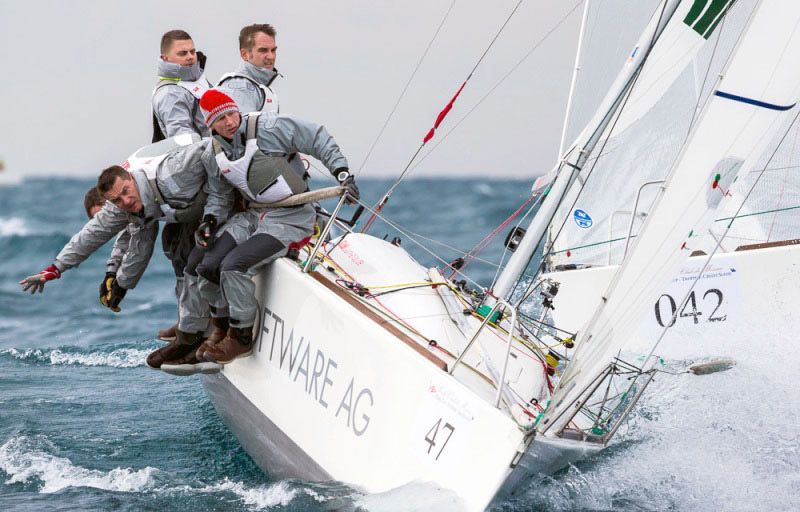 Yachting clothing for extreme conditions of long ocean crossings
Yachting clothing for extreme conditions of long ocean crossings
In the extreme conditions of long ocean crossings, and for both wet and cool weather conditions, professionals use a three-layer gear system. It is optimal because it provides complete protection of a person from water, as well as a piercing, cold wind. The top layer is a waterproof membrane fabric (jacket, trousers or overalls). The middle layer is designed to preserve body heat, so most often these are fleece items. Do not forget about the non-hindering thermal trousers. The lowest (so-called base) layer is breathable thermal underwear.
Cold slows down the thinking and reaction of a person, increases the risk of seasickness. All this can deplorably affect the end result of your swimming. Therefore, do not neglect the advice of experts, it is better to treat the selection and purchase of yachting clothing with the utmost seriousness.
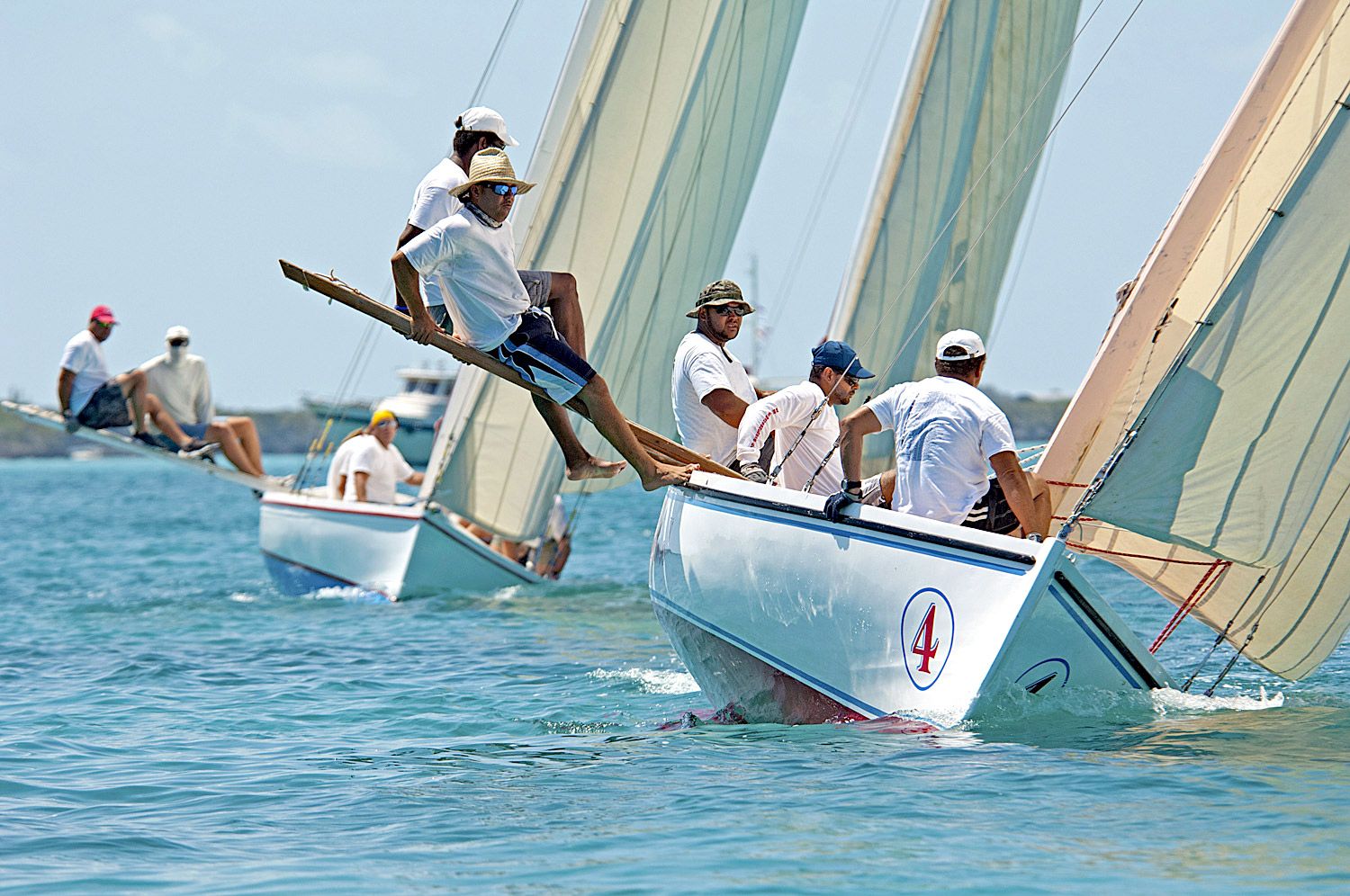 Equipment for sailors in hot tropical climates
Equipment for sailors in hot tropical climates
As the air temperature rises, as well as when staying in warm waters with a hot climate, the yachtsman leaves only the minimum necessary for comfortable sailing from body equipment. Some things can be replaced with more practical, breathable, made from fabrics containing natural cotton fibers. A T-shirt and quick-drying shorts are ideal. They will allow the body to receive air unhindered, eliminate the risk of overheating. In addition, sailing shorts can be worn carefree even on a wet deck.
Jackets and vests
If you are going to race in windy or stormy conditions with an air temperature of 15 degrees or below, then give preference to an outer jacket made of waterproof, breathable and durable fabric. It will protect the rest of the components of the equipment from moisture, and you from hypothermia.
Comfortable temperature and dryness of the body all year round – this is what distinguishes correctly selected, high-quality outerwear for yachting!
Such clothes have a high, most comfortable collar with a flap and a snap-on hood specially designed for such purposes, as well as waterproof cuffs on the sleeves. It is the perfect solution for cruising, sailing dinghy regattas or sailing in temperate waters. The plus of the collar is its soft fleece lining. One of the most important criteria here is the presence of pockets on the upper jacket. They should be roomy and easily accessible. The purpose of these pockets is to store special equipment and accessories. Manufacturers place them in front or on the sides.
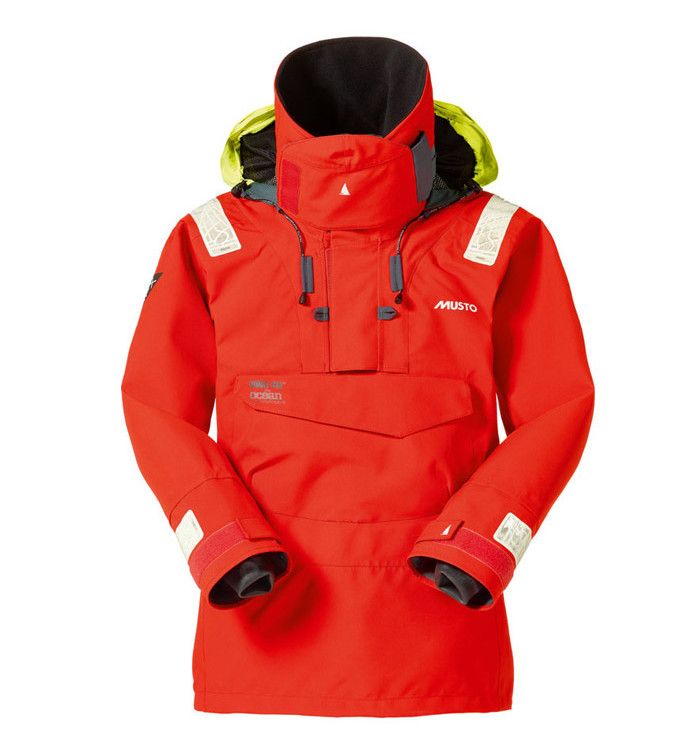 Jacket for windy or stormy weather with an air temperature of 15 degrees and below
Jacket for windy or stormy weather with an air temperature of 15 degrees and below
Jackets for the middle layer of yachtsmen's outfit. Most often they are made from fleece, which retains the heat of the body, which is particularly soft.
 Comfortable thermal fleece jacket with water-repellent impregnation without fastening (middle layer)
Comfortable thermal fleece jacket with water-repellent impregnation without fastening (middle layer)
Warm weather jackets. They are lightweight and soft, resembling a sweatshirt in appearance. However, this jacket will not allow you to get wet even in a summer shower, as it has a special water-repellent coating. In addition, the fabric of such models provides comfortable breathability, which is very important for those who are fond of yachting in the warm season.
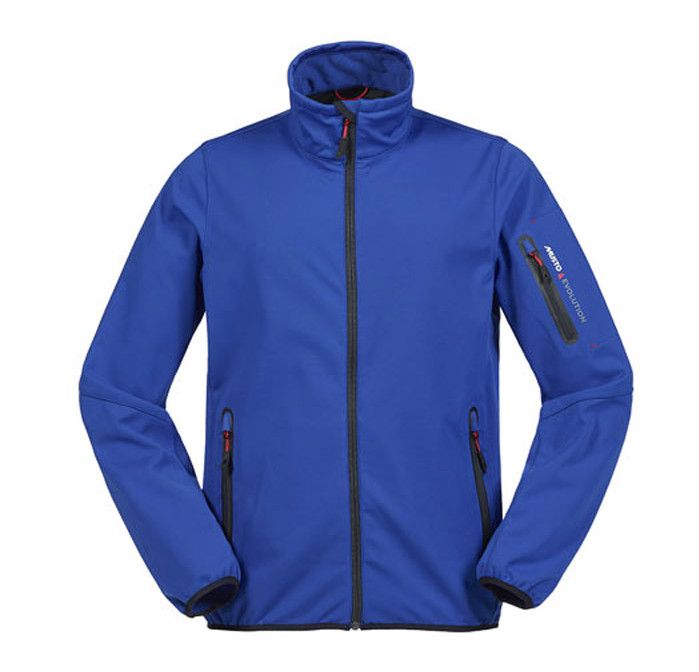 Soft and lightweight jacket with a water-repellent coating withstands summer rain while allowing the body to breathe
Soft and lightweight jacket with a water-repellent coating withstands summer rain while allowing the body to breathe
The vest is another practical sailing item that provides extra protection for the sailor. It can be worn over a T-shirt if the wind is too breezy in the summer, or worn under a waterproof outer jacket as a middle layer. It is important that these vests are waterproof and windproof. At the same time, fleece reliably retains body heat.
 A vest with functional pockets keeps you cool from the wind
A vest with functional pockets keeps you cool from the wind
In any case, jackets and vests should give a feeling of comfort, not hinder your movements, reliably cover your neck, lower back, part of your buttocks, and, if necessary, your head.
Pants & Shorts
According to their appearance, sailing trousers can be divided into 4 types:
- Pants;
- Semi-overalls;
- Overalls;
- Shorts.
For its intended purpose, the equipment of the yachtsman differs into those related to the upper, middle or lower layer of clothing.
Models for the top layer used in extreme conditions deserve special attention to themselves when choosing. They are usually made from the same membrane fabric as the waterproof outer jacket. The main purpose of such trousers is the absolute protection of the clothes and body of the yachtsman under them from water, and, accordingly, hypothermia. They are fully waterproofed and provide reliable wind protection. In such models, the seat of the trousers is reinforced, it is possible to adjust the cuffs, and the zippers on the pockets are waterproof. They can be made in the form of trousers, semi-overalls or overalls.
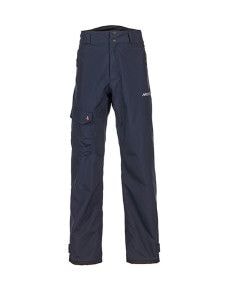 Waterproof sailing trousers
Waterproof sailing trousers  Semi-overalls are comfortable and functional in cold ocean waters, relevant for all kinds of races
Semi-overalls are comfortable and functional in cold ocean waters, relevant for all kinds of races  Extreme sailing jumpsuit
Extreme sailing jumpsuit
There are also trousers for the middle layer. Most often made of fleece. They have increased air permeability, maximum comfort, soft fabric, allow the body to breathe. This provides maximum comfort during long ocean crossings or in summer races, where the wind and the speed of the vessel create a large amount of wet spray that threatens to wet the yachtsman's outfit to the skin.
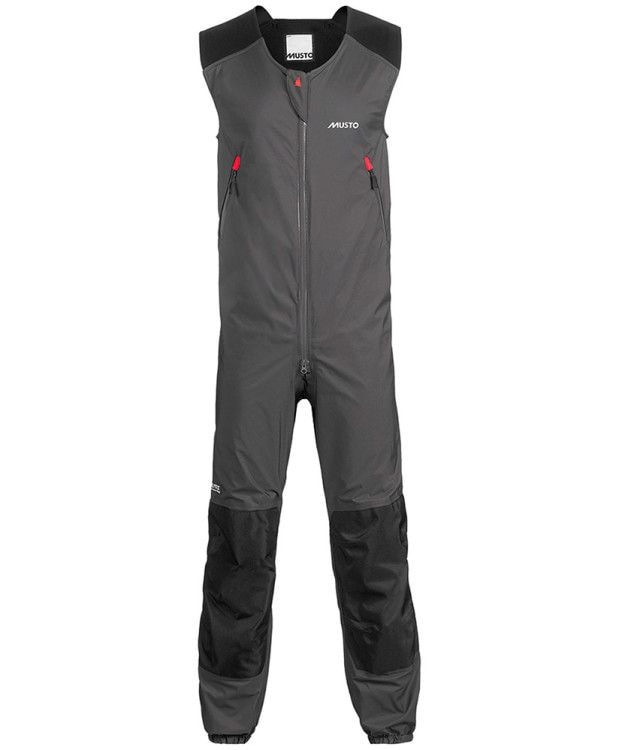 Bib for the middle layer
Bib for the middle layer
When buying trousers, you should take into account that clothing for a long ocean crossing and coastal race will be insignificant, but differ in terms of the fabrics and technologies used. Be sure to check with the seller.
Thermal trousers for the middle and base layers. In the first case, they are worn under the upper water-repellent overalls or trousers, sewn from jersey and fleece, sometimes with fleece. As for the models for the lower layer, here the style follows the curves of the body and is made using seamless sewing technology. All this ensures maximum comfort even in conditions of high activity and physical activity, which are relevant in super difficult regattas. Such trousers have a drainage effect, which does not allow condensation formed under the clothes to settle on the skin and cool it. And the areas with elastic inserts made of special fabric reliably protect your muscles, joints and kidneys.
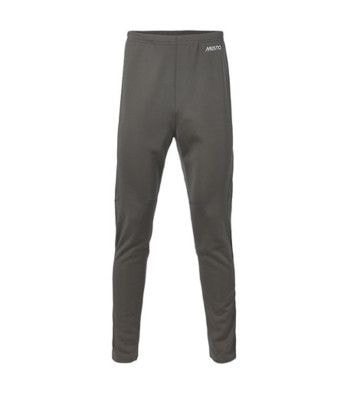 Fleece thermal trousers for the middle layer
Fleece thermal trousers for the middle layer  Base layer trousers
Base layer trousers
The shorts are optimal in warm weather. They are no different from trousers or overalls in terms of water resistance. You can safely sit in them for a long time on a wet deck without the risk of getting wet. The shorts also have a reinforced seat. You can even swim in them, since the fabric used dries quickly and does not shrink.
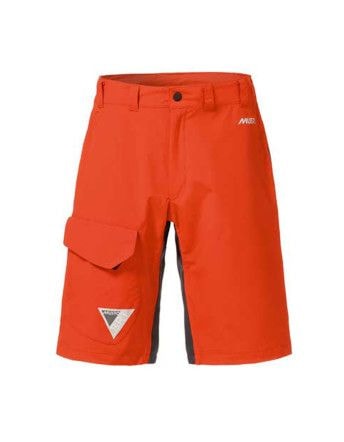 Waterproof racing shorts
Waterproof racing shorts 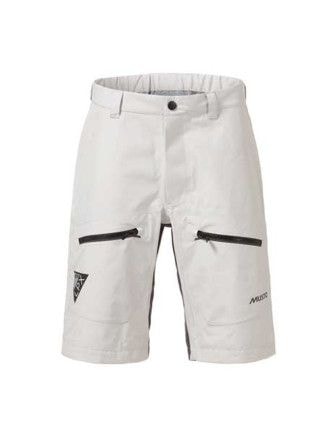 Sunshine Swim Shorts
Sunshine Swim Shorts
The waistband of such models is maximally elastic, the textiles are resistant to sunlight and salt water, and the pockets are equipped with water-resistant zippers or comfortable, drop-down flaps. All this allows you not to think about anything, but to completely surrender to the pleasure of sailing.
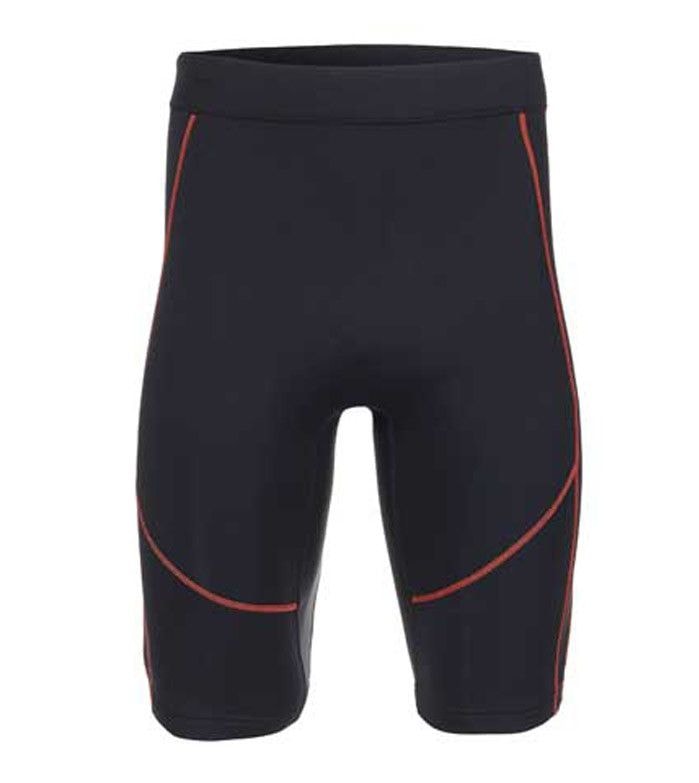 Neoprene racing shorts
Neoprene racing shorts
Special attention should be paid to racing shorts, also called hiking shorts. They are made of neoprene, which provides maximum comfort and protection for the yachtsman in regattas on dinghy and sailing dinghies. Thanks to the cut that follows the curves of the body, these shorts eliminate the risk of friction against the skin, and special inserts provide support for the muscles and joints of the legs.
In conclusion of the first part
In the first part, we examined the upper and lower, and also partially the middle layer of the yachtsman's equipment. But that's not all! In the second part, you will find the rest of the yachting clothing. This will be an overview of wetsuits, t-shirts, tops and sailing essentials. In the meantime – leave comments, what interests you, what kind of sailing jackets and trousers do you prefer? Share your personal experiences and impressions. Your opinion is important to us. See you!









